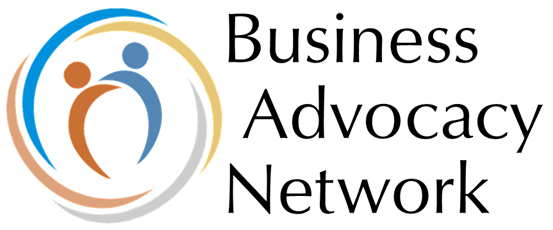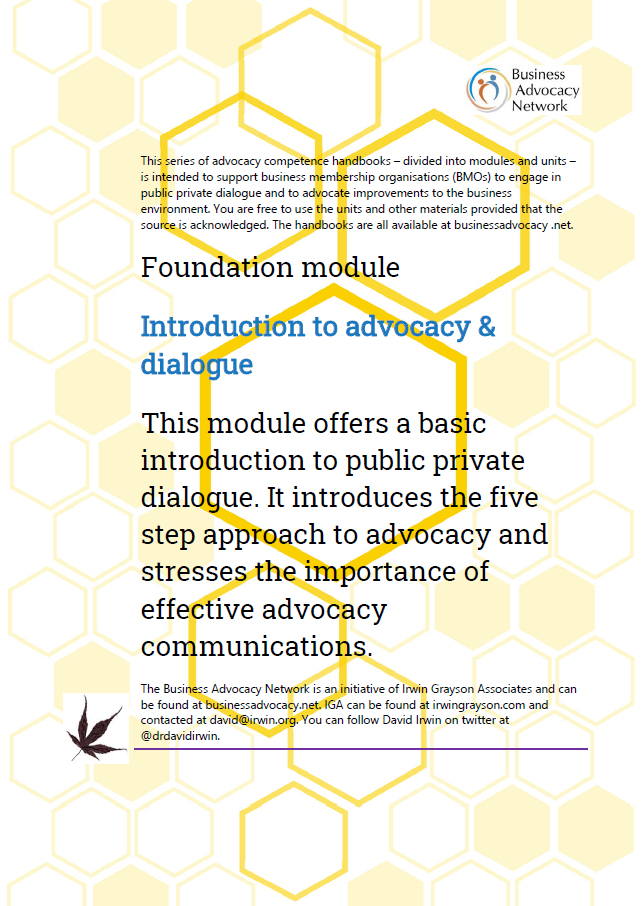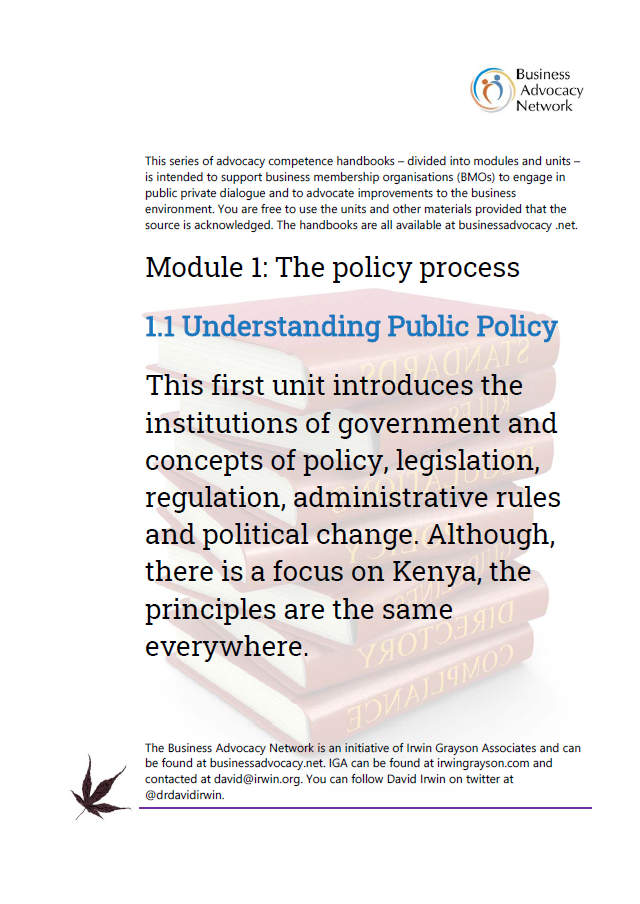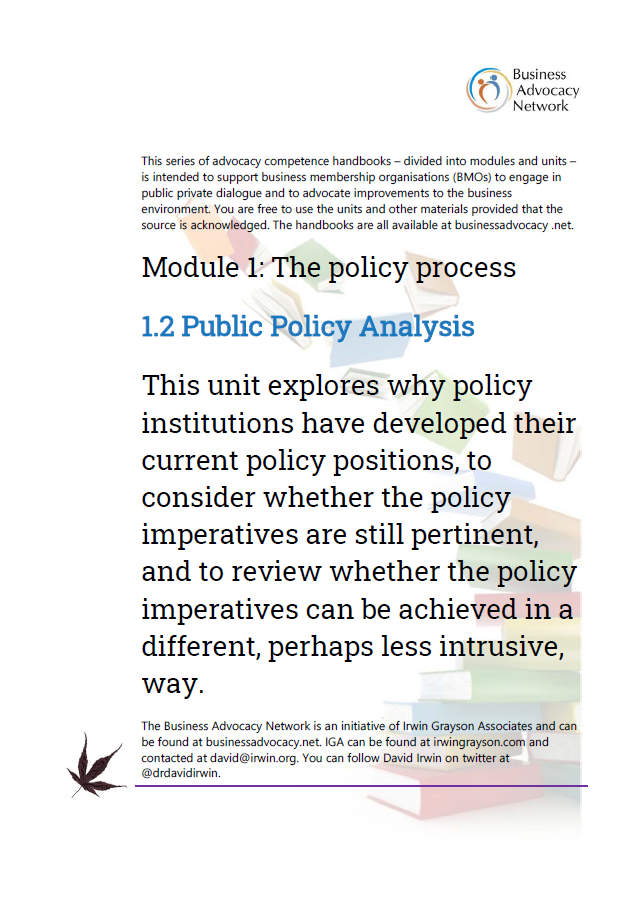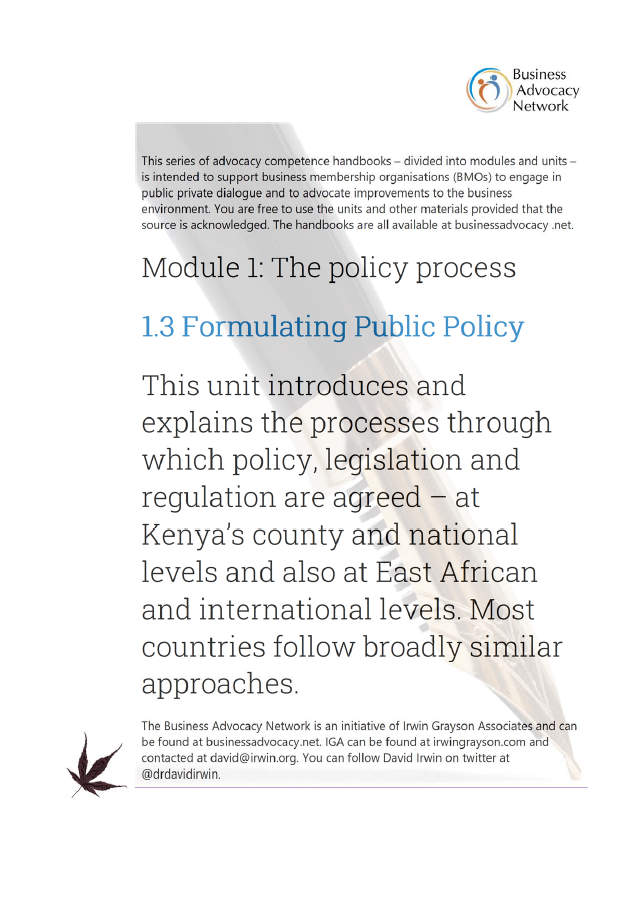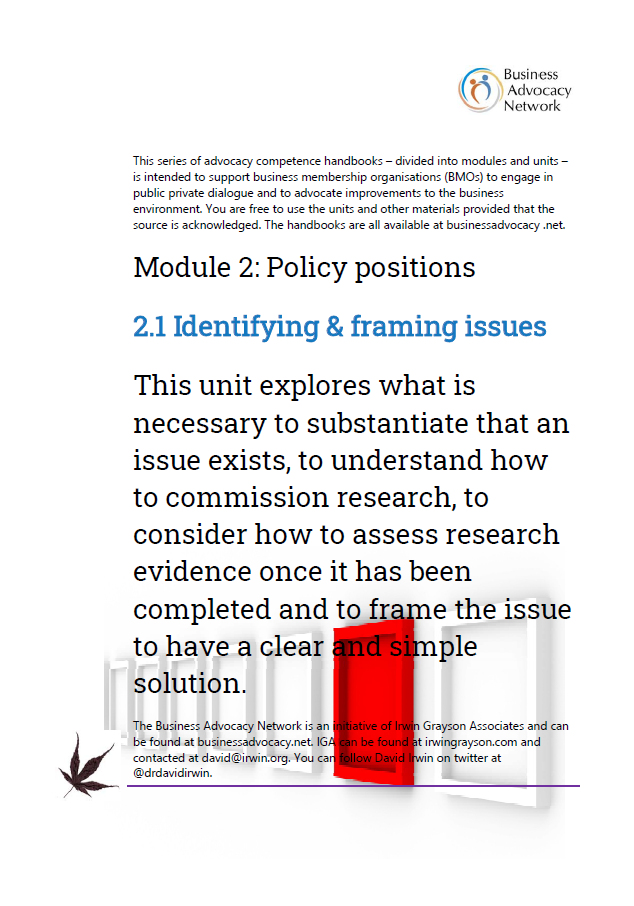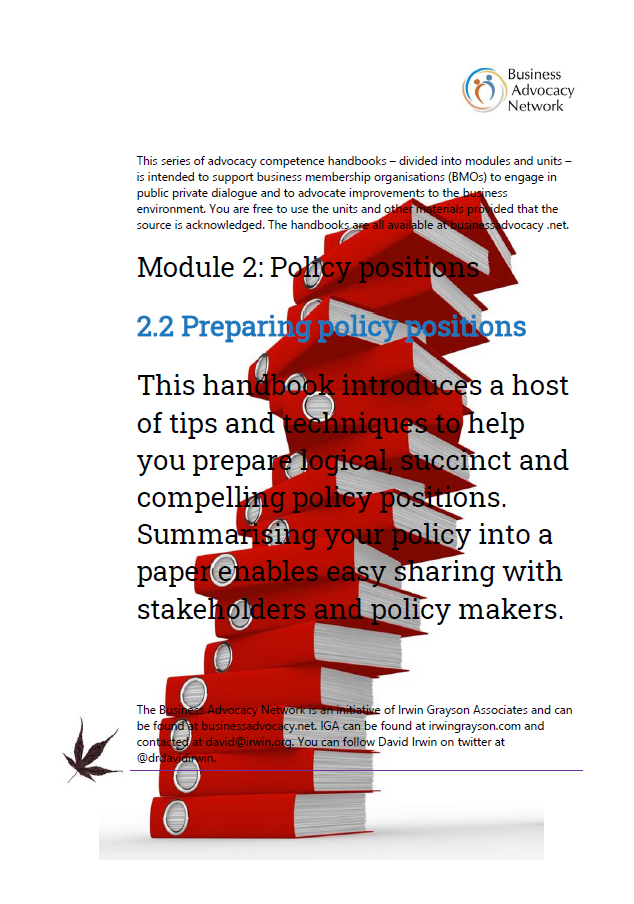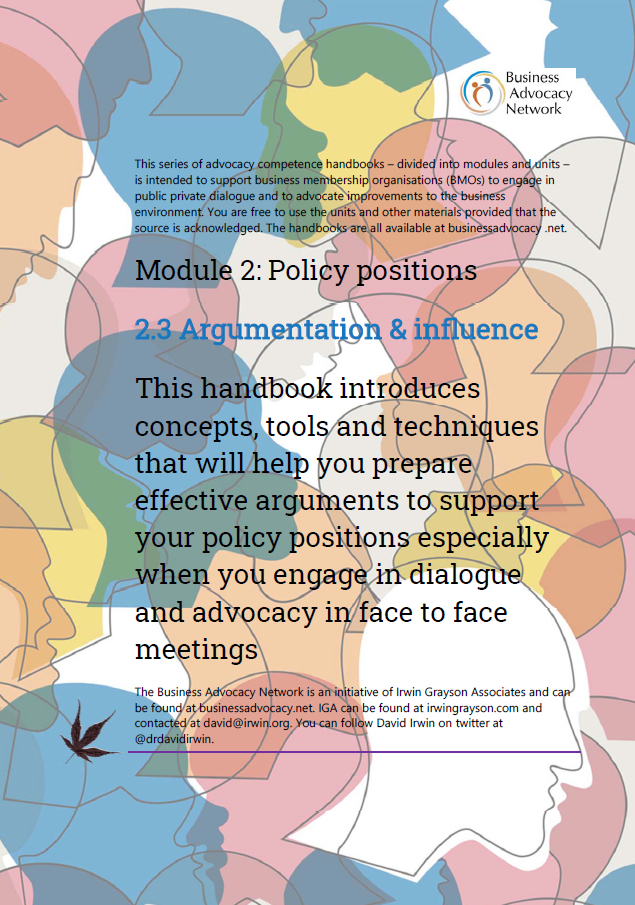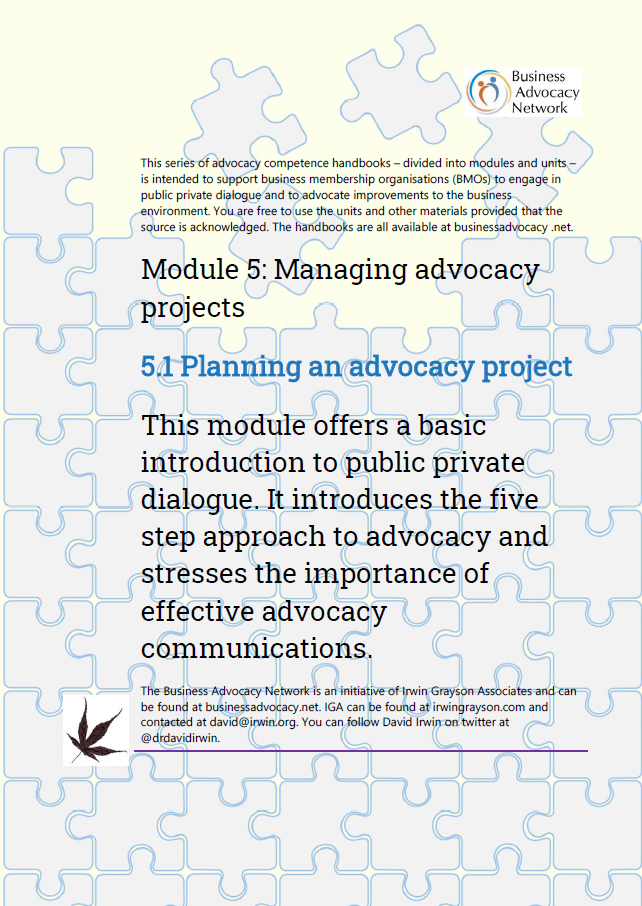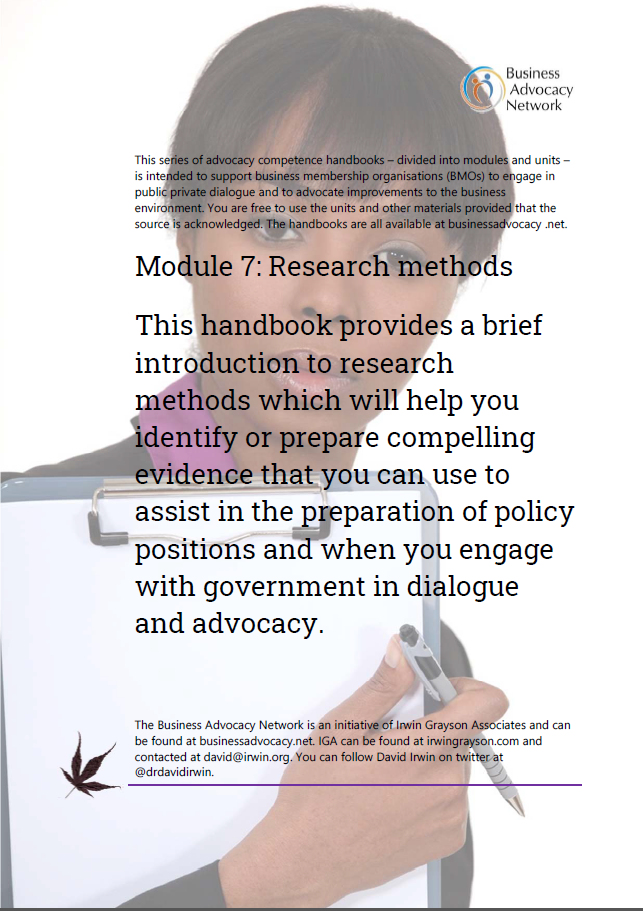Building your advocacy competence: handbooks
It is important that organisations wishing to engage in public private dialogue and private sector advocacy build their competence as quickly as possible. The factsheets give a good overview of a wide range of topics but are less comprehensive that the handbooks available here. These were originally originally written to accompany a range of training programmes though are all designed to stand alone. These can be downloaded for your own use. The handbooks are updated periodically and we would welcome your feedback on areas that are insufficiently clear or where you feel the handbooks would benefit from the inclusion of additional material. Note that to download the handbook, you need to click on the title on the flipside of the image (or, in some cases, just on the flipside image).Module 0: Foundation
Module 1: The policy process
Module 2: Policy positions
Module 3: Communications

3.1 Communications & public relations :
Raises awareness of the power of and introduces effective approaches to communications and public relations. This unit will provide a firm foundation for the other units
in module 3 and all the units in module 4.

2.2 Media relations & social media:
Explores when, and when not, and how to use the media, including the setting of objectives for a media campaign and techniques to measure the effectiveness
of a media campaign, remembering that media relations is just a small part of public relations. This unit also introduces social media and how it can be used effectively

3.3 Interview skills:
The ability to give effective, cogent and succicnt answers in interviews is an important skill. This handbook offers a range of techniques to employ to prepare well before you are interviewed by journalists
Module 4: Written communications

4.1 Branding & house styles:
Offers suggestions to ensure that BMOs adopt and maintain a brand so that all documents consistently adhere to a house style. This covers, inter alia, formatting, fonts,
use of colour, etc.

4.2 Writing press releases:
Describes the steps to prepare press releases that will secure good media coverage

4.3 Preparing written documents:
Proposes techniques to ensure that you prepare good written documents, so that the reader is led logically and persuasively through a document or argument.
Module 5: Managing advocacy projects

5.2 Effective financial management:
Introduces budgets, financial statements, management accounts and bookkeeping technques to help you exercise effective financial control.

5.3 Evaluating advocacy projects:
Introduce a range of techniques to evaluate whether advocacy has been successful, including impact assessment, cost benefit analysis and regulatory impact assessment.
Module 6: Managing a BMO

6.1 Leadership, strategy & planning:
Introduces and explores the need for effective leadership and strategy in setting the direction of a BMO and how advocacy and dialogue fits within that strategy

6.2 Corporate governance & ethics:
Explores key aspects of governance and ethics and encourages responsible behaviour

6.3 Members & member services:
Introduce a range of techniques to evaluate whether advocacy has been successful, including impact assessment, cost benefit analysis and regulatory impact assessment.
Module 7: Research
Other resources
Links to resources on the net Annotated policy position example: blood transfusion Annotated policy position example: sugar regulationsTools and templates
Here are some tools and templates which you might find helpful as you develop your ideas, prepare your plans and implement your activities. Simple Gantt chart
If you want shorter briefs, see our range of factsheets
And if you want a more comprehensive approach, see
Irwin, D, Jackson, A & Hawley, PA (2012) Advocacy for Business Associations which provides an introduction to advocacy for business associations and others who are seeking to influence public policy using a mix of theory, examples and case studies.
